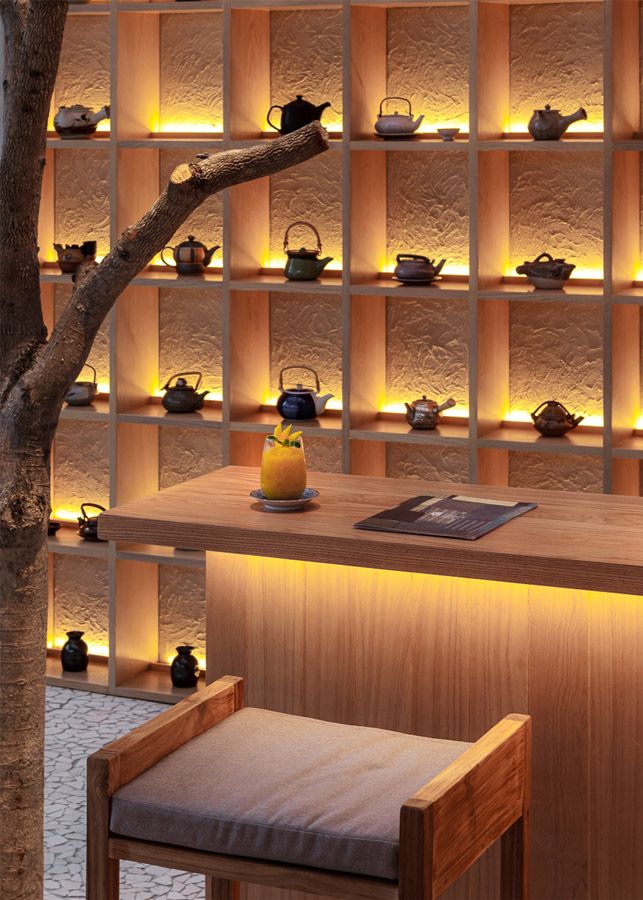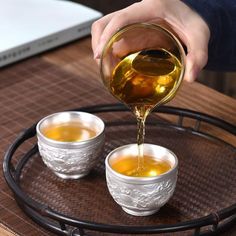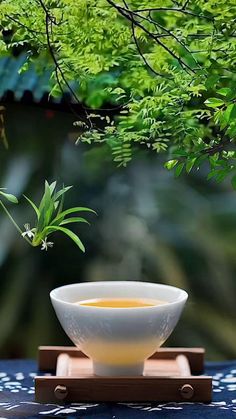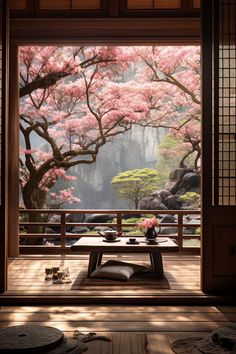The Heritage and Skills of Gongfu Tea Production
The craftsmanship of Gongfu tea production is a long-standing tradition that carries rich cultural significance. From picking and sun-drying to rolling, each step is imbued with traditional techniques. In the traditional tea-making process, different roles play distinct parts, each with unique skill requirements.
Picking: As the first step in Gongfu tea production, picking requires skilled tea pickers to carefully select high-quality tea leaves. Tea pickers must be familiar with the growth cycles of tea plants and know the optimal picking times to ensure the tea leaves are of the right tenderness and quality. During picking, craftsmen often use specific tools, such as bamboo baskets and scissors, to ensure the integrity of the leaves. For example, in Wuyishan, Fujian, tea pickers harvest leaves early in the morning when the dew is still on the leaves, reducing damage during the picking process and maintaining their freshness and aroma.
Sun-drying: During the sun-drying process, the sun-drying craftsmen must master the right timing and temperature to ensure the tea leaves maintain their best color and aroma. Sun-drying not only requires direct sunlight but also timely turning of the leaves to ensure even heating. Over-drying can lead to excessive oxidation and loss of freshness, while under-drying fails to remove the raw taste of the leaves. With years of experience, sun-drying craftsmen can precisely control the duration and temperature of sun-drying to achieve the ideal oxidation level for the tea leaves.
Rolling: Rolling is one of the key steps in traditional tea-making, requiring the rolling master to skillfully manipulate the leaves into twisted shapes, allowing the tea juices to permeate evenly and release a richer aroma. During rolling, the master adjusts the pressure and duration based on the type and tenderness of the leaves. For instance, tender leaves require gentle pressure and shorter rolling times to preserve their delicacy, while older leaves need more force and longer rolling to ensure proper fermentation. The rolled leaves typically form tight, twisted shapes, which not only aid in tea preservation but also enhance the aroma release during brewing.

The Essence and Impact of Gongfu Tea Roasting Craftsmanship
Gongfu tea roasting craftsmanship holds a pivotal position in tea production, with its importance self-evident. During the roasting process, different roles display unique skill sets that directly affect the quality of the tea.
Roasting Master: The roasting master is the central figure in Gongfu tea roasting, needing exquisite roasting skills and extensive experience to flexibly control the heat and roasting time, allowing the tea leaves to emit unique aromas and flavors. During roasting, heat control is crucial. The master continuously stirs the leaves to ensure even heating and adjusts the fire based on changes in the leaves' color and aroma. For example, when roasting Longjing tea, the master quickly stirs the leaves at high heat to rapidly change their color and lock in freshness. In contrast, when roasting oolong tea, the process involves slow roasting at medium heat to allow full fermentation and release of rich fruity and floral scents.
Blending Master: In addition to the roasting master, the blending master also plays a significant role in the roasting process. The blending master is responsible for combining various ingredients, such as floral and fruity spices, to enhance the tea's aroma and taste. For instance, in making jasmine tea, the blending master mixes fresh jasmine flowers with tea leaves and goes through multiple scenting processes to fully absorb the jasmine fragrance. The blending master must be familiar with the characteristics and ratios of different spices to ensure a rich and layered aroma and a mellow taste in the tea.
Quality Inspector: The quality inspector is responsible for checking the tea's quality, ensuring that its taste and appearance meet the best standards. Through a comprehensive judgment using sight, smell, and taste, the inspector assesses the tea's color, aroma, taste, and shape. For example, the inspector examines whether the tea leaves have a bright color, pure aroma, mellow taste, and neat shape to determine the tea's quality. Only teas that pass the strict scrutiny of the quality inspector can enter the market for consumers to enjoy.
The Art of Tea Utensils in Gongfu Tea Culture

Gongfu tea is not just a beverage but a cultural symbol, with tea utensils being one of the carriers of this culture. The craftsmanship of tea utensils in Gongfu tea includes items like Yixing teapots and tea cups, each with unique craft features and skill levels.
Yixing Teapot: The Yixing teapot is one of the most representative tea utensils in Gongfu tea, with a long-standing craft tradition. The teapot maker needs exquisite pottery skills, proficient in selecting clay, shaping, and firing techniques, to create Yixing teapots with rich colors and smooth lines. The process of making a Yixing teapot includes selecting clay, shaping, carving, and firing. Selecting high-quality clay is the first step in making a good teapot. The shaping process requires the maker to have superb manual skills, creating the ideal teapot shape through techniques like throwing and trimming. Carving is an important artistic aspect of Yixing teapots, where the maker carves various patterns and inscriptions on the teapot body, giving the teapot unique artistic value. Finally, firing is the last step in making a Yixing teapot, achieving the desired hardness and color through high-temperature firing.
Tea Cup: The making of tea cups places even greater emphasis on the precision of manual skills. The craftsmanship of glass and porcelain tea cups varies, with the maker meticulously polishing each cup to ensure its delicate texture and transparency, adding an elegant touch to the tea-drinking experience. For example, in making porcelain tea cups, the maker goes through processes like throwing, trimming, glazing, and firing to achieve the ideal shape and texture of the cup. The making of glass tea cups involves processes like blowing, shaping, and annealing to ensure the transparency and heat resistance of the cup. Whether porcelain or glass tea cups, the maker must pay attention to details to ensure the aesthetic and practicality of the cups.
The Charm and Skills of Gongfu Tea Art

Gongfu tea performance is a comprehensive display integrating art and skill, including horizontal tea art performance, tea pouring skills, and various other forms. Different roles showcase unique skill differences in tea art performance, offering different audio-visual experiences to the audience.
Horizontal Tea Art Performance: Horizontal tea art performance is one of the core contents of Gongfu tea performance, requiring performers to have superb tea art skills and unique expressiveness. Tea artists need to master various tea art actions such as brewing and pouring tea, bringing tea art performance to the ultimate level and making the audience feel as if they are in the realm of tea ceremony. For example, during tea brewing, the tea artist controls the water temperature precisely, chooses the right brewing time, and performs elegantly to perfectly present the aroma and taste of the tea. The tea artist also selects appropriate tea utensils and brewing methods based on different tea types to ensure the best flavor of the tea.
Tea Pouring Skills: Tea pouring skills are a major highlight in tea art performance, requiring tea pourers to have precise movements and stable techniques. There are differences in tea pouring skills among different roles, with some focusing on controlling the speed and force of the pour, while others emphasize the smoothness of the water flow and the stability of the tea soup. For example, when pouring tea, the tea pourer controls the speed and direction of the water flow to evenly pour the tea soup into the tea cup without spilling. Tea pourers also choose different pouring postures and movements based on different tea art performance forms to enhance the观赏性 of the performance.
Team Collaboration and Skill Integration in Gongfu Tea Production

Gongfu tea production is a complex and meticulous process that requires close cooperation among different roles to produce high-quality tea. In the tea-making process, from picking to processing and tea tasting, each step requires the combined skills of different roles.
Tea Picker: The tea picker carefully selects high-quality tea leaves, laying the foundation for the tea's quality. With extensive experience and keen observation, they choose the best picking times and locations to ensure the harvested leaves are of superior quality. The work of the tea picker not only affects the initial quality of the tea but also provides high-quality raw materials for subsequent processing steps.
Tea Maker: The tea maker skillfully masters tea processing techniques, transforming tea leaves into aesthetically pleasing and uniquely flavorful tea products. Throughout steps like sun-drying, rolling, and roasting, the tea maker's exquisite skills and extensive experience ensure the tea reaches ideal quality during processing. The tea maker's work directly influences the taste and aroma of the tea, making it a core part of the Gongfu tea production process.
Tea Artist: The tea artist presents these high-quality teas to consumers in an artistic manner. Through exquisite tea art performances, they perfectly showcase the cultural and artistic value of Gongfu tea. The work of the tea artist not only enhances the ornamental of Gongfu tea but also provides a unique tea-tasting experience for consumers.
The integration and complementarity of skills among different roles make the Gongfu tea production process more complete and efficient. The tea picker's leaf selection determines the tea's quality, while the tea maker's processing skills directly affect the tea's taste and aroma. Finally, the tea artist presents these teas to consumers, ensuring the Passing on and promotion of Gongfu tea culture.

